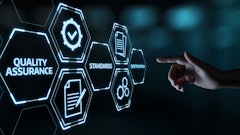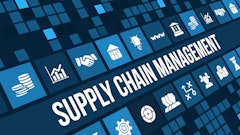
Procurement directors dread when their primary supplier can’t deliver critical components needed for next week's production run. No warning, no alternatives offered—just a problem dumped in their lap that needs solving immediately. Anyone who's worked in procurement knows this feeling all too well.
It's in these moments—when time is short and options seem limited—that artificial intelligence (AI) tools actually prove useful.
The productivity multiplier
AI can be seen as a productivity multiplier, not some magical solution. For example, an IT director needs to provide 10 new employees with laptops, bags, and smartphones. Without AI, they are logging into systems, identifying vendors, reviewing features, placing orders, and monitoring the delivery schedule. It is tedious work that can take hours or even days.
Then change that scenario to include practical AI and agentic AI tools. The director types something like: “I require 10 Lenovo laptops with standard company specifications for these employees by next Thursday.” The AI checks out the approved vendors, gets the latest prices, checks for availability and offers options that can be accepted or declined quickly. What was a half day’s work becomes a 10-minute job.
It’s not a matter of reducing procurement staff – that would be missing the point altogether. It’s about your team being able to avoid the transactional portions of their job and actually getting to do what they were hired for – developing and maintaining supplier relationships, negotiating contract and pricing terms, and creating a more resilient supply chain that is less likely to fail in the next crisis.
The data scientist procurement professional
The procurement professional of the future will not only be the one who understands contracts and how to get more out of vendors. They’ll also have to become more like data scientists, who can use AI tools to identify threats that others don’t see, understand what the business needs before it needs it, and have contingency plans when the primary suppliers fail.
Here’s a real situation: A consumer goods manufacturer is faced with higher component costs due to new import policies. The conventional approach would have the procurement team spending all day calling existing suppliers to try and negotiate lower prices or searching for new suppliers within their limited contacts. It’s adaptive, it’s slow, and it usually results in paying more than you should.
Now look at that same scenario with AI-powered procurement. Your team could rapidly search for thousands of potential suppliers around the world, identify those with good credit and risk ratings, compare quality records against your needs and identify alternatives that won’t affect product quality. All this happens before the production line is even affected.
This type of capability brings procurement out of the back-office shadows and makes it a real competitive tool. When your procurement team can develop solutions while competitors are still figuring out what's happening, you're not only cutting costs but also keeping production going when others may have to stop. That's the difference between a cost center and a strategic asset that executives want to include in planning sessions.
Decision making in the presence of supply chain disruptions
During COVID-19, a mortuary services company, for instance, saw their average daily cases jump by 300%. They needed to quickly secure specialized equipment, including cooling units, to manage the overflow.
The company needed purchase orders processed immediately to secure priority with vendors who would not release equipment without confirmed orders. Having an AI-powered system allowed them to generate purchase orders faster than competitors still using manual processes, placing them at the front of the line to receive critical equipment.
This example shows how AI systems are useful for handling well-defined sequential tasks with well-defined parameters. When procurement teams are required to execute a high volume of transactions during a crisis, AI systems provide uniform output as the human processing power decreases.
A brief overview of the benefits of AI in procurement
Any procurement leader planning on implementing AI within their organization must understand where these systems shine:
Automating purchase order preparation, receipt and examination of invoices, and compliance audits. AI is ideal for that kind of automation.
Data analysis and pattern recognition. AI is very successful in the analysis of the spending habits of different departments and the advice it gives on how to spend less than what a human analyst would recommend.
Alternative sourcing. When the primary suppliers are affected by the disruptions, the AI can quickly suggest and cross verify the potential substitutes based on the set of parameters.
However, there are critical shortcomings of AI in procurement applications:
Quality assessment. It can check for equivalence in specifications only; it cannot taste, for example, and decide on something or give an opinion.
Complex negotiation. Relationship management, intelligent planning and planning and counter planning are all human tasks in the process of negotiation.
Creative problem-solving. New supply chain management challenges demand innovative solutions that current AI systems are incapable of generating on their own.
The human-AI partnership
The best procurement organizations will adopt a partnership model where AI will take care of the back-office functions, data analysis and the initial supplier identification while the procurement professionals will concentrate on the management of suppliers, strategy, negotiation and problem solving.
This partnership also imposes a certain procurement team’s skill set. Without the need to learn coding, it is important to be able to formulate the proper directions for AI systems, comprehend their outputs, and understand their limitations.
Developing your AI procurement strategy
Organizations that want to use AI in procurement should follow a step-by-step plan:
Education first. Ensure that the procurement teams are aware of the potential of AI and the limitations that come with it before putting the new systems into place.
Start with proven use cases. Begin with the current use cases that are well understood and have clear benefits, such as invoice processing or spend analysis.
Measure impact. Define the performance metrics before the implementation and compare the results by looking at the cycle time, cost savings, and team satisfaction.
Gradual growth. Move to more sophisticated processes only after achieving success with basic functions.
It is important not to leap at the opportunity of implementing AI technologies without a proper understanding of what exactly needs to be done. These tools are meant to enhance the performance of individuals rather than act as their substitutes.
Looking ahead
In the near future, procurement professionals will function as strategic advisors who will be able to wade through millions of data points and provide potential solutions to management. The best teams will be the ones that embrace the use of AI to enhance their role as strategic business advisors and also realize that human intelligence, innovation, and relationships can’t be substituted.

![Pros To Know 2025 [color]](https://img.sdcexec.com/files/base/acbm/scn/image/2025/01/Pros_To_Know_2025__color_.67856cb23da64.png?auto=format%2Ccompress&fit=crop&h=191&q=70&w=340)
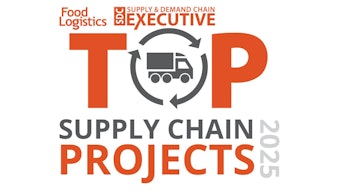




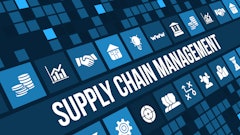






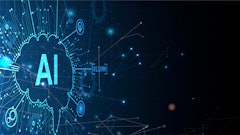


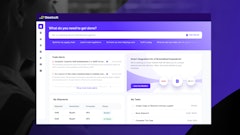


![Pros To Know 2025 [color]](https://img.sdcexec.com/files/base/acbm/scn/image/2025/01/Pros_To_Know_2025__color_.67856cb23da64.png?auto=format%2Ccompress&fit=crop&h=135&q=70&w=240)




